In Cold Blood
4.5
-
22,554 ratings
NATIONAL BESTSELLER • The most famous true crime novel of all time "chills the blood and exercises the intelligence" (The New York Review of Books)—and haunted its author long after he finished writing it.
On November 15, 1959, in the small town of Holcomb, Kansas, four members of the Clutter family were savagely murdered by blasts from a shotgun held a few inches from their faces. There was no apparent motive for the crime, and there were almost no clues.
In one of the first non-fiction novels ever written, Truman Capote reconstructs the murder and the investigation that led to the capture, trial, and execution of the killers, generating both mesmerizing suspense and astonishing empathy. In Cold Blood is a work that transcends its moment, yielding poignant insights into the nature of American violence.
Capote learned of the quadruple murder before the killers were captured, and he traveled to Kansas to write about the crime. He was accompanied by his childhood friend and fellow author Harper Lee, and they interviewed residents and investigators assigned to the case and took thousands of pages of notes. Killers Richard Hickock and Perry Smith were arrested six weeks after the murders and later executed by the state of Kansas. Capote ultimately spent six years working on the book.
In Cold Blood was an instant critical and commercial success. Considered by many to be the prototypical true crime novel, it is also the second-best-selling book in the genre's history, behind Vincent Bugliosi's Helter Skelter about the Charles Manson murders. Some critics also consider Capote's work the original non-fiction novel, although other writers had already explored the genre, such as Rodolfo Walsh in Operación Masacre. In Cold Blood has been lauded for its eloquent prose, extensive detail, and triple narrative which describes the lives of the murderers, the victims, and other members of the rural community in alternating sequences. The psychologies and backgrounds of Hickock and Smith are given special attention, as is the pair's complex relationship during and after the murders. In Cold Blood is regarded by critics as a pioneering work in the true-crime genre, although Capote was disappointed that the book failed to win the Pulitzer Prize. Parts of the book differ from the real events, including important details.
Kindle
$12.99
Available instantly
Audiobook
$0.00
with membership trial
Hardcover
$16.49
Paperback
$11.79
Ships from
Amazon.com
Payment
Secure transaction
ISBN-10
0679745580
ISBN-13
978-0679745587
Print length
343 pages
Language
English
Publisher
Knopf Doubleday Publishing Group
Publication date
January 31, 1994
Dimensions
5.21 x 0.73 x 7.99 inches
Item weight
9.3 ounces
Popular Highlights in this book
Imagination, of course, can open any door—turn the key and let terror walk right in.
Highlighted by 3,645 Kindle readers
Nothing is more usual than to feel that others have shared in our failures, just as it is an ordinary reaction to forget those who have shared in our achievements.
Highlighted by 3,257 Kindle readers
Like the waters of the river, like the motorists on the highway, and like the yellow trains streaking down the Santa Fe tracks, drama, in the shape of exceptional happenings, had never stopped there.
Highlighted by 3,046 Kindle readers
Product details
ASIN :
B000FC1IRM
File size :
2627 KB
Text-to-speech :
Enabled
Screen reader :
Supported
Enhanced typesetting :
Enabled
X-Ray :
Enabled
Word wise :
Enabled
Editorial Reviews
"Until one morning in mid-November of 1959, few Americans--in fact, few Kansans--had ever heard of Holcomb. Like the waters of the river, like the motorists on the highway, and like the yellow trains streaking down the Santa Fe tracks, drama, in the shape of exceptional happenings, had never stopped there." If all Truman Capote did was invent a new genre--journalism written with the language and structure of literature--this "nonfiction novel" about the brutal slaying of the Clutter family by two would-be robbers would be remembered as a trail-blazing experiment that has influenced countless writers. But Capote achieved more than that. He wrote a true masterpiece of creative nonfiction. The images of this tale continue to resonate in our minds: 16-year-old Nancy Clutter teaching a friend how to bake a cherry pie, Dick Hickock's black '49 Chevrolet sedan, Perry Smith's Gibson guitar and his dreams of gold in a tropical paradise--the blood on the walls and the final "thud-snap" of the rope-broken necks.
Sample
The Last to See Them Alive
THE VILLAGE OF HOLCOMB STANDS on the high wheat plains of western Kansas, a lonesome area that other Kansans call “out there.” Some seventy miles east of the Colorado border, the countryside, with its hard blue skies and desert-clear air, has an atmosphere that is rather more Far West than Middle West. The local accent is barbed with a prairie twang, a ranch-hand nasalness, and the men, many of them, wear narrow frontier trousers, Stetsons, and high-heeled boots with pointed toes. The land is flat, and the views are awesomely extensive; horses, herds of cattle, a white cluster of grain elevators rising as gracefully as Greek temples are visible long before a traveler reaches them.
Holcomb, too, can be seen from great distances. Not that there is much to see—simply an aimless congregation of buildings divided in the center by the main-line tracks of the Santa Fe Railroad, a haphazard hamlet bounded on the south by a brown stretch of the Arkansas (pronounced “Ar-kan-sas”) River, on the north by a highway, Route 50, and on the east and west by prairie lands and wheat fields. After rain, or when snowfalls thaw, the streets, unnamed, unshaded, unpaved, turn from the thickest dust into the direst mud. At one end of the town stands a stark old stucco structure, the roof of which supports an electric sign—DANCE—but the dancing has ceased and the advertisement has been dark for several years. Nearby is another building with an irrelevant sign, this one in flaking gold on a dirty window—HOLCOMB BANK. The bank closed in 1933, and its former counting rooms have been converted into apartments. It is one of the town’s two “apartment houses,” the second being a ramshackle mansion known, because a good part of the local school’s faculty lives there, as the Teacherage. But the majority of Holcomb’s homes are one-story frame affairs, with front porches.
Down by the depot, the postmistress, a gaunt woman who wears a rawhide jacket and denims and cowboy boots, presides over a falling-apart post office. The depot itself, with its peeling sulphur-colored paint, is equally melancholy; the Chief, the Super-Chief, the El Capitan go by every day, but these celebrated expresses never pause there. No passenger trains do—only an occasional freight. Up on the highway, there are two filling stations, one of which doubles as a meagerly supplied grocery store, while the other does extra duty as a café—Hartman’s Café, where Mrs. Hartman, the proprietress, dispenses sandwiches, coffee, soft drinks, and 3.2 beer. (Holcomb, like all the rest of Kansas, is “dry.”)
And that, really, is all. Unless you include, as one must, the Holcomb School, a good-looking establishment, which reveals a circumstance that the appearance of the community otherwise camouflages: that the parents who send their children to this modern and ably staffed “consolidated” school—the grades go from kindergarten through senior high, and a fleet of buses transport the students, of which there are usually around three hundred and sixty, from as far as sixteen miles away—are, in general, a prosperous people. Farm ranchers, most of them, they are outdoor folk of very varied stock—German, Irish, Norwegian, Mexican, Japanese. They raise cattle and sheep, grow wheat, milo, grass seed, and sugar beets. Farming is always a chancy business, but in western Kansas its practitioners consider themselves “born gamblers,” for they must contend with an extremely shallow precipitation (the annual average is eighteen inches) and anguishing irrigation problems. However, the last seven years have been years of droughtless beneficence. The farm ranchers in Finney County, of which Holcomb is a part, have done well; money has been made not from farming alone but also from the exploitation of plentiful natural-gas resources, and its acquisition is reflected in the new school, the comfortable interiors of the farmhouses, the steep and swollen grain elevators.
Read more
About the authors
Truman Capote
Truman Capote was born in New Orleans in 1925 and was raised in various parts of the south, his family spending winters in New Orleans and summers in Alabama and New Georgia. By the age of fourteen he had already started writing short stories, some of which were published. He left school when he was fifteen and subsequently worked for the New Yorker which provided his first - and last - regular job. Following his spell with the New Yorker, Capote spent two years on a Louisiana farm where he wrote Other Voices, Other Rooms (1948). He lived, at one time or another, in Greece, Italy, Africa and the West Indies, and travelled in Russia and the Orient. He is the author of many highly praised books, including A Tree of Night and Other Stories (1949), The Grass Harp (1951), Breakfast at Tiffany's (1958), In Cold Blood (1965), which immediately became the centre of a storm of controversy on its publication, Music for Chameleons (1980) and Answered Prayers (1986), all of which are published by Penguin. Truman Capote died in August 1984.
Read more
Reviews
Customer reviews
4.5 out of 5
22,554 global ratings
Amazing!
5
Truman!
Reviewed in the United States on June 3, 2024
Verified Purchase
This book is by far my favorite book. It isn't my first book that I read by Truman poodie. I wrote a paper about him in junior high. Then again in high school, then again in college I became obsessed with him and his life. His writing style is so unique and magnificent and makes you want. To just dive into the book and live there. He's a magnificent person in this book. Basically, lets you into his imagination and how he views the world on how he views this killer with kindness and with humanity. He doesn't look at him like cold-blooded. Like the book says. I've always said if there's one famous person I can have to dinner. You know who it is. It would be truman He always puts on a great show. But I wonder what's behind those feelings. Well, maybe in the sky. He'll be my famous guest to dinner.
Read more
Steve Koss
5
A Remarkable Page-Turner Even Though You Already Know the Outcome
Reviewed in the United States on September 27, 2009
Verified Purchase
When a book like IN COLD BLOOD reaches the level of being a classic, there has to be a reason. Consider the following two excerpts:
"The land is flat, and the views are awesomely extensive; horses, herds of cattle, a white cluster of grain elevators rising as gracefully as Greek temples are visible long before a traveler reaches them."
"Then, starting home, he walked toward the trees, and under them, leaving behind him the big sky, the whisper of wind voices in the wind-bent wheat." The former excerpt is from Capote's opening paragraph; the latter cointains his closing sentence. Both are extraordinary, especially for their time, in capturing the mood and poetry of a place in the middle of a true-life story of a horrific mass murder.
As is certainly well known, IN COLD BLOOD is Truman Capote's magazine-article-turned full-length-docu-novel about the murders of four members of the Clutter family in their Holcomb, Kansas, farmhouse in November 1959. The two killers, Dick Hickock and Perry Smith, were ultimately caught, tried, sentenced, and executed, factual matters that are still commonly known today thanks to two recent movies about Capote's life and his efforts to write the book. Even at its publication, IN COLD BLOOD was not a detective story in the traditional sense, since everyone already knew the perpetrators and the case's eventual disposition.
In an era when such incidents were reported either factually (newspaper style) or sensationally (crime magazine style), Truman Capote effectively created an entire new genre: journalism as art form. Writing with a level of descriptive detail about places and events that create a strong sense of immediacy in the reader's mind, he begins his story with a re-creation of the Clutter family's last day of life. The effect is profound and eerie, since these pages are read with a foreknowledge of death not shared by the real-life characters on the page. Capote builds his suspense masterfully, alternating between the movements of Hickock and Smith and those of the Clutters (husband and father Herbert, perennially sick wife and mother Bonnie, intelligent, tinkering son Kenyon, and All-American sweetheart daughter and town darling Nancy.
As he brings the two parties closer and closer together, Capote continues to fill in background on their respective lives. By the time his orchestrated characters have reached their mutual, bloody crescendo, the reader is intimately acquainted with them as individuals and their respective life stories. Thus, the author gives us individuals with whom we are intimate as characters in a novel, yet they are real people about whom he is reporting in a senseless, horrifying mass murder story. This is Capote's genius and the source of his book's classic status - factual reporting that reads like a novel, displaying the intimacy with its characters that is normally reserved for the so-called "omniscient author," the one who can hear, share, and express his or her characters' most private thoughts and motivations.
Capote's pacing and remarkable eye for detail never relent as the story moves from crime to investigation, arrest, and trial by jury. He maneuvered himself into a situation where he was privy to every detail of the police investigation; it is equally clear he had extended access to Hickock and Smith throughout their ordeal, up to and including their ultimate disposition. While it was doubtless a level of access no longer available to reporters or writers, Capote took maximum advantage of it in crafting his story. What comes out of it, surprisingly, is a tale of two socially maladjusted young men of above-average intelligence whose trial was of questionable fairness, particularly as regards the mental health of one of them (who was probably more criminally insane than scheming murderer). In one of the book's most telling moments, Capote recounts the reports that the court-appointed psychiatrist would have rendered had the judge (and Kansas state law at the time) allowed them to do so.
IN COLD BLOOD is truly a master work by an effete, East Coast reporter who beat the odds (and prejudices, no doubt) and entwined himself in his story and the lives of its actors to an unheard-of degree. The result was, and is, more than just a gripping account of a horrendous crime. It is a study in criminality: its victims, its effect on their families and community, its perpetrators and their families, even on the law enforcement personnel involved in the investigation. One can hardly imagine a more finely drawn study of a single crime and its all-too-human impact, presented in a form that remains to this day a page-turner in the very best sense of that phrase.
Read more
29 people found this helpful
Frank Donnelly
5
The Best Non Fiction Violent Crime Work That I Have Read, Although At Times Painful...
Reviewed in the United States on October 14, 2020
Verified Purchase
"In Cold Blood" is an iconic non fiction book that is authored by an iconic fiction writer, Truman Capote. The story is about a real life, hideous violent crime that occurred in the State of Kansas in 1959. Although non fiction, the book has the style of fiction and reads as a hard crime thriller, "page turner". In a case such as this, I don't wish to say that I "enjoyed" this book. The crime is disgusting. However the writing is excellent. As a retired police investigator of violent felonies, the entire work had the ring of truth and reality for me.
I had put off reading this book up until now for numerous reasons. As a student of literature and authors, I prefer to read books by authors in order of publication so that I can study the evolution, if any, of the author. Also, in this case, I am a retired police,officer suffering from PTSD. Therefore it was with a good deal of hesitation that I decided to finally read this work. I do need to report to you that I did indeed find it personally very painful. I have worked cases like this and they have stayed with me. In some ways, the old scars were opened To some extent. It was not as bad as I was afraid it would be. (I had asked others about this prior to reading the book.)
Obviously all I know about this case is what I have read. Presuming the work is accurate, I can tell you this is what is like to arrive at the scene of a hideous violent felony in which there are no witnesses and no obvious leads, To a conscientious lead investigator, it is almost impossible to convey the feeling of near hopeless, forlorn, desolation that may descend upon "The Lead" in a case such as this. Truman Capote does a really good job in describing all of this. It proved extremely realistic to me.
Of all the books that I have ever read, if I was instructing a course on homicide investigations, I am positive I could use this book as a core text. I know exactly how I would have worked this "job" after all of the primary work and leads had been run down. Often I was assigned cases such as this after the primary work was done, and the investigation had stalled. The police "caught a break" in this case. However the break came from exactly the type of source that I would have pursued. Believe me it is a complete pain to work a case this way, but it can be done proactively rather than waiting for a break. This is not "normal aberrant" behavior. This is a subset of aberrant behavior, that I refer to as "aberrant of aberrant". the very nature of which, that makes this job solvable...
In summary, this is an excellent work of non fiction. The only hesitation I have in recommending this work is the hideous nature of the crime. This crime fits my personal definition of obscenity. However if you are a young detective assigned to violent crimes, and really want to learn and not just "Mail it in" this is the one.... Thank You for taking the time to read this review.
Read more
194 people found this helpful
R. M. Peterson
5
Capote extracts every literary particle
Reviewed in the United States on August 16, 2011
Verified Purchase
I have lately been reading a number of books that inhabit the no-man's land between fiction and non-fiction, including works that seek to tell about real events with fictional techniques. I decided to go back and re-read one of the pioneers of the region: IN COLD BLOOD.
Capote explained that in writing IN COLD BLOOD he "wanted to produce a journalistic novel, something on a large scale that would have the credibility of fact, the immediacy of film, the depth and freedom of prose and the precision of poetry." Well, he sure succeeded. So much so that the book is not as startling, new, and different - as novel - as it was 45 years ago, because in its path there have followed a multitude of similar books - arguably, even, an entire genre (true crime). Indeed, a young reader of today might wonder why the book merits inclusion among the other classics of The Modern Library. I myself have some reservations about including IN COLD BLOOD in the same grouping as, say, "Moby-Dick" or "The Brothers Karamazov", though it certainly need not take a back seat to any of the four novels by John Irving enshrined in The Modern Library. Though no longer as stunningly fresh as it once was, IN COLD BLOOD still packs a considerable punch and the craftsmanship still shines.
The subject event of IN COLD BLOOD is probably familiar to most: Four members of an all-American ranch family in western Kansas were each trussed up and then shot to the head at close range with a .12-gauge shotgun by two young men alienated from mainstream society and psychologically off kilter. The killers, Perry Smith and Dick Hickok, had entered the house under the belief that they would find at least $10,000 in a safe and with the intention of leaving no witnesses. There was no safe, however, and all the killers garnered were $40, a transistor radio, and a nice pair of binoculars. Still, they left no witnesses.
Out of that grim and (when you get down to it) tawdry fare Capote creates a gripping "nonfiction novel". No doubt much of the underlying attraction is voyeuristic in nature. But Capote, in his telling, deftly sublimates that base voyeurism with his clinically nonjudgmental renderings of western Kansas life, his character studies and psychological probings, and his discussions of such issues as capital punishment and the insanity defense. What most distinguishes IN COLD BLOOD - and separates it from almost all of its epigones - are the keenly observed and brilliantly described details. Here is one of my favorites:
"Among Garden City's animals are two gray tomcats who are always together--thin, dirty strays with strange and clever habits. The chief ceremony of their day is performed at twilight. First they trot the length of Main Street, stopping to scrutinize the engine grilles of parked automobiles, particularly those stationed in front of the two hotels, the Windsor and Warren, for these cars, usually the property of travelers from afar, often yield what the bony, methodical creatures are hunting: slaughtered birds--crows, chickadees, and sparrows foolhardy enough to have flown into the path of oncoming motorists. Using their paws as though they are surgical instruments, the cats extract from the grilles every feathery particle."
Likewise, one senses that Capote extracted from the Clutter murder case every literary particle. IN COLD BLOOD may no longer be "novel", but it still is a helluva read.
Read more
4 people found this helpful

ceruleansocks
4
Haunting Heavy Hitter that Sticks
Reviewed in the United States on November 15, 2012
Verified Purchase
I must admit that I approached this novel with many a bias and preconceived notion. I was curious about the claims that the author, Truman Capote, had created a new type of book-- the nonfiction novel.
Let's use a word nerd alert to get down to the marrow of those two words: nonfiction |nänˈfik sh ən| prose writing that is based on facts, real events, and real people, such as biography or history. -and- novel |ˈnävəl| a fictitious prose narrative of book length, typically representing character and action with some degree of realism. How can a novel which is by definition a fictitious tale with realistic leanings be nonfiction? Can one possibly glean enough fact, setting, character descriptions, and plot to flesh out an entire novel worth reading? I suspected not. So how do I feel now that I have read the book? I have several thoughts... here a few. The tone of the novel is journalistic in nature with a sympathetic overtone interwoven towards the victims -- and also the killers. I'll admit that this was off putting for me. The title for the book is a duplicitous moniker. "In Cold Blood" refers to the way the Clutter family was brutally murdered, but it also reflects the opinion of the author regarding the judicial treatment and sentencing of the murderers Perry Smith and Dick Hickok. When reading a book about a horrific mass murder, one does not expect to cultivate tender feelings for the people holding the guns. And yet, Capote tries his darnedest to incite empathy for the tough, neglected, even abusive past of these two individuals.
A greasy, charming, sticky fingered ladies man -- Hickok is always at the ready with a dirty joke and a hot check. He is apparently ashamed of his tendency to rape young adolescent girls, but that doesn't seem to impede his impulse to do it... several times. He is classified as knowing right from wrong, but due to a car crash that could possibly have damaged his brain-- he now only lives on his impulses with no thought for the consequences. His parents are present but poor.
Perry Smith has a troubled past to be sure. His parents --former rodeo performers turned cross country impoverished gypsies-- separate after his mother turns to alcohol to assuage her anxiety. After a particularly bad fight, the mother sweeps off with the children. The father does very little to reclaim his children over the years. The mother finally drinks herself to death, but not before turning all of her children over to the state. Perry's sisters and older brother are reprimanded to an orphanage. Perry has a horrific experience at a catholic institution where a nun tortures him for wetting the bed. He later begins to act out his aggression and is sent to some sort of detention center where he is again abused. He becomes ill and hospitalized --only then does his father find him and take him in. (But they have a tumultuous relationship that ends in Perry nearly killing his father and abandoning him for the merchant marines.) Perry's character is the oddest combination of an uneducated intelligent poet type with an unchecked thinly veiled murderous rage. His demeanor is disarming, his crippled physicality mollifying, his internal dialogue is haunting. He truly scares me. A shrouded menace that beguiles it's prey into believing itself nurtured and safe...
Capote also gives us some psychiatric jargon to back up his feelings that these two praire-billy slaying thieves were simply overly vilified mentally inept victims themselves. However, this doesn't ring true-- with this reader at least. They had hard lives, physical and emotional trauma, and yet I couldn't find it in my heart to leap on the weep wagon for them after reading the descriptions --personal interview descriptions-- of what they meticulously did to the entire Clutter family. I will not go into those details here, but the level of callus premeditated apathy for human life is appalling.
The book is well written and does softly tread the line of novel and fact. I believe there to be several embellishments but none that detract from the horror or heart of the story set before you. I was held captive, suffered, and was sentenced along with the characters in the story. To put it lightly, I was enthralled and would read many a more book written in this style.
This book was a heavy hitter, and the actual facts made it that much more serious and engaging. I rate this book a 4 because I haven't stopped thinking about it since I put it down. Please follow my other reviews at ladyofliteraryleisure.blogspot.com
Read more
11 people found this helpful
Best Sellers
The Great Alone: A Novel
4.6
-
152,447
$5.49

The Four Winds
4.6
-
156,242
$9.99

Winter Garden
4.6
-
72,838
$7.37

The Nightingale: A Novel
4.7
-
309,637
$8.61

Steve Jobs
4.7
-
24,596
$1.78

Iron Flame (The Empyrean, 2)
4.6
-
164,732
$14.99
A Court of Thorns and Roses Paperback Box Set (5 books) (A Court of Thorns and Roses, 9)
4.8
-
26,559
$37.99

Pretty Girls: A Novel
4.3
-
88,539
$3.67
The Bad Weather Friend
4.1
-
34,750
$12.78
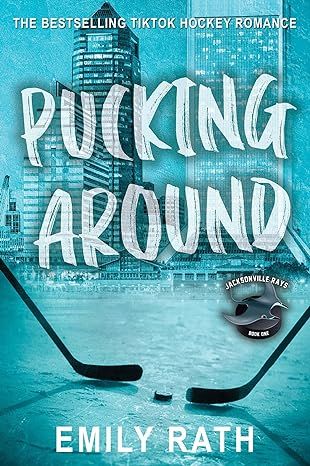
Pucking Around: A Why Choose Hockey Romance (Jacksonville Rays Hockey)
4.3
-
41,599
$14.84
Start with Why: How Great Leaders Inspire Everyone to Take Action
4.6
-
37,152
$9.99
Tomorrow, and Tomorrow, and Tomorrow: A novel
4.4
-
95,875
$13.99
Weyward: A Novel
4.4
-
27,652
$11.99
Tom Lake: A Reese's Book Club Pick
4.3
-
37,302
$15.74
All the Sinners Bleed: A Novel
4.4
-
12,894
$13.55
The Mystery Guest: A Maid Novel (Molly the Maid)
4.3
-
9,844
$14.99

Bright Young Women: A Novel
4.2
-
8,485
$14.99
The Wager: A Tale of Shipwreck, Mutiny and Murder (Random House Large Print)
4.5
-
28,672
$14.99
Hello Beautiful (Oprah's Book Club): A Novel (Random House Large Print)
4.4
-
79,390
$14.99

Small Mercies: A Detective Mystery
4.5
-
16,923
$10.00

Holly
4.5
-
31,521
$14.99
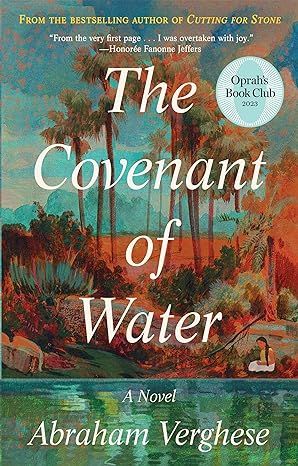
The Covenant of Water (Oprah's Book Club)
4.6
-
69,712
$9.24

Wellness: A novel
4.1
-
3,708
$14.99

The Art Thief: A True Story of Love, Crime, and a Dangerous Obsession
4.3
-
4,805
$14.99

